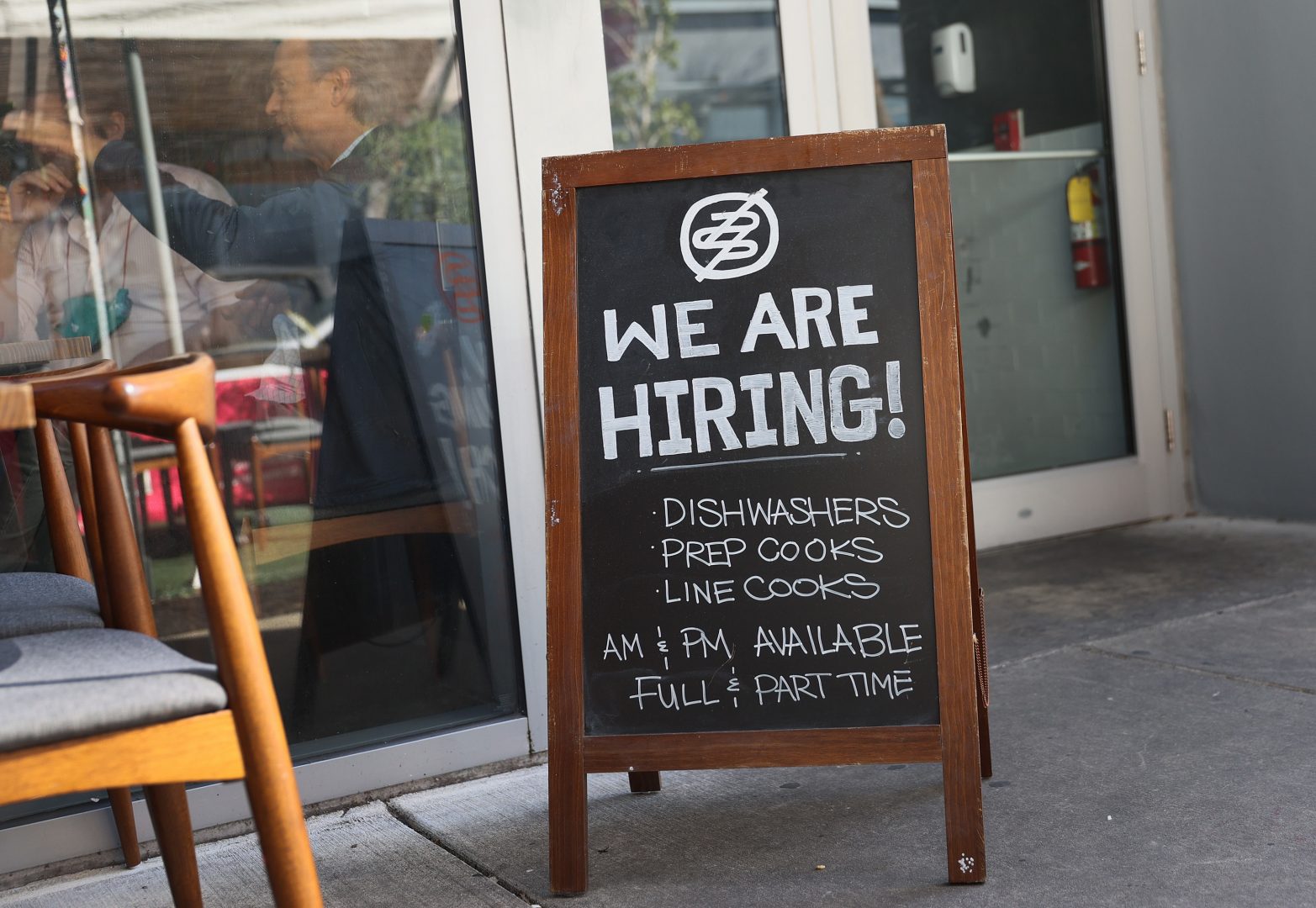
Joe Raedle / Getty Images

Joe Raedle / Getty Images

Joe Raedle / Getty Images
(Washington) — A strong rebound in job growth in October is raising hopes that a long-awaited recovery in the labor market is underway. But millions of workers still remain on the sidelines — and the economy needs them back.
The Labor Department reported Friday that U.S. employers added 531,000 jobs last month. Job gains for August and September were also revised upward. The unemployment rate fell to 4.6%.
Bars and restaurants added 119,000 workers in October as consumers felt more comfortable eating out. Factories and warehouses also saw significant job gains — a sign the fallout from the delta wave of coronavirus infections may be fading.
“A lot of what we’re seeing in the last 90 days is because of delta,” Federal Reserve Chairman Jerome Powell said Wednesday at the end of the central bank’s policy meeting. “Delta put us on a different path.”
Even with last month’s solid job gains, the economy is still 4.2 million jobs short of where it was when the pandemic began.
And questions about when or even if sidelined workers will return to the labor force continue to weigh on the U.S. recovery.
There were more than 10 million unfilled job openings at the end of August. From factories to furniture stores, businesses are desperate for additional help.
There are promising signs as the health outlook has improved in recent weeks, helping spark an increase in restaurant reservations and airport traffic.
Powell said that the waning impact of the delta variant should lead to stronger job growth in the months to come, though perhaps not as strong as the million-plus jobs that were added in July.
Throughout the year, the U.S. has averaged between 550,000 and 600,000 jobs per month.
“If we should get back on that path, then we would be making good progress,” Powell said. “And we’d like to see that, of course.”
But previous signs of recovery have been dashed.
Some analysts had expected to see a bigger return to the workforce once schools reopened and pandemic unemployment benefits expired nationwide in September.
So far, it hasn’t materialized. The labor force participation rate was unchanged in October.
That’s left employers competing for scarce job applicants, driving up wages especially in traditionally low-paid industries like bars and restaurants.
Average wages for all workers were up 4.2% in September compared to a year ago, but for many workers that’s not enough.
Some 3 million people who left the workforce during the pandemic have not yet returned.
After Karen Schenck’s bartending job in Tucson, Ariz., dried up in the summer of 2020, she moved in with her sister in California and found gig work as a part-time delivery driver.
“It’s a hustle,” Schenck says. “It’s not my favorite thing.”
She welcomes the break from in-person customer contact, though. And she’s reluctant to return to her old bartending job, even as her former employer is eager to rehire her.
“It’s so nice to not be yelled at by somebody just because I wasn’t quick on the draw with a Budweiser,” Schenck says.

Sometimes, your mornings are just too busy to catch the news beyond a headline or two. Don’t worry. The Morning Agenda has got your back. Each weekday morning, host Tim Lambert will keep you informed, amused, enlightened and up-to-date on what’s happening in central Pennsylvania and the rest of this great commonwealth.
The days of journalism’s one-way street of simply producing stories for the public have long been over. Now, it’s time to find better ways to interact with you and ensure we meet your high standards of what a credible media organization should be.